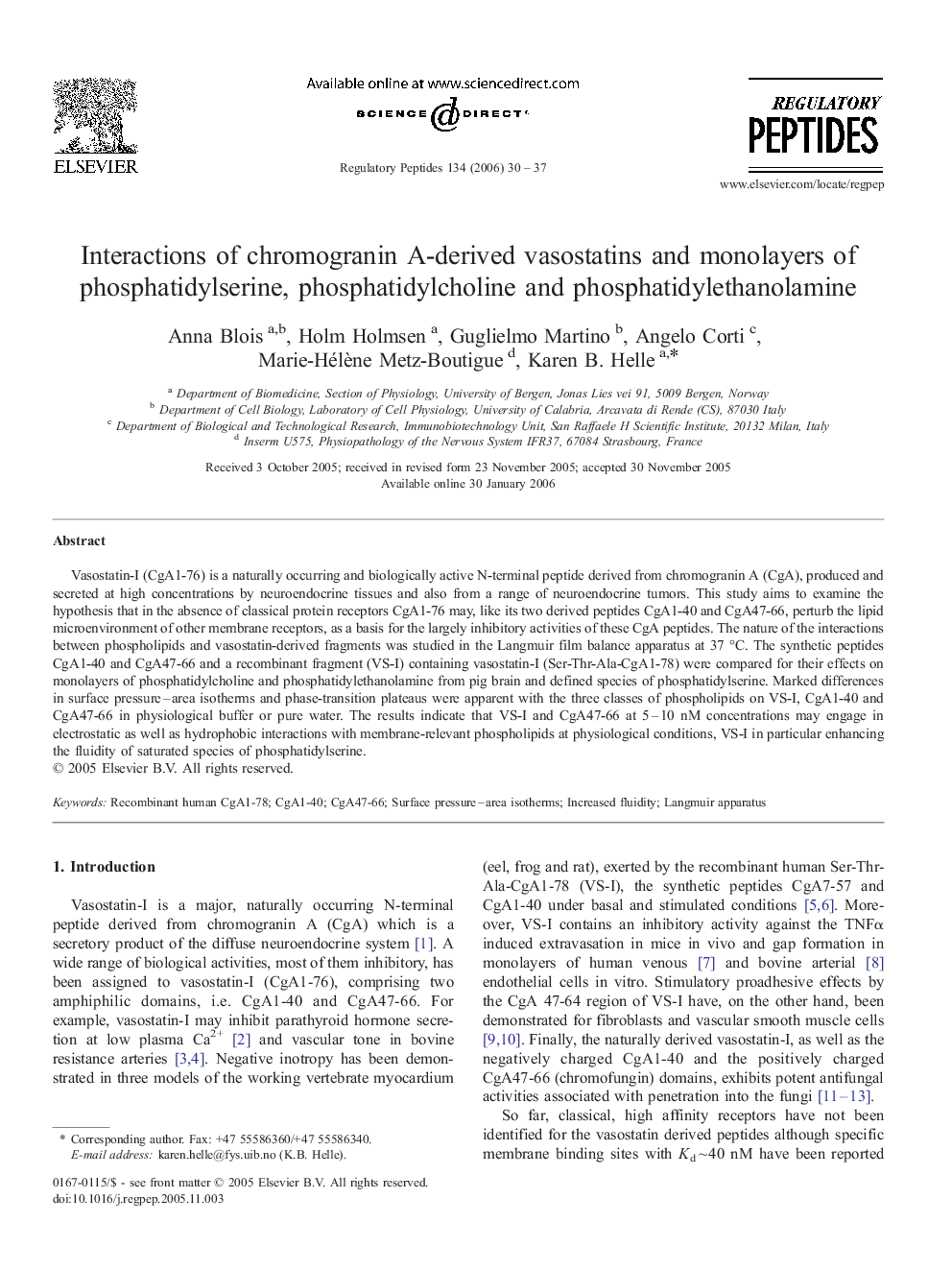| Article ID | Journal | Published Year | Pages | File Type |
|---|---|---|---|---|
| 2023565 | Regulatory Peptides | 2006 | 8 Pages |
Vasostatin-I (CgA1-76) is a naturally occurring and biologically active N-terminal peptide derived from chromogranin A (CgA), produced and secreted at high concentrations by neuroendocrine tissues and also from a range of neuroendocrine tumors. This study aims to examine the hypothesis that in the absence of classical protein receptors CgA1-76 may, like its two derived peptides CgA1-40 and CgA47-66, perturb the lipid microenvironment of other membrane receptors, as a basis for the largely inhibitory activities of these CgA peptides. The nature of the interactions between phospholipids and vasostatin-derived fragments was studied in the Langmuir film balance apparatus at 37 °C. The synthetic peptides CgA1-40 and CgA47-66 and a recombinant fragment (VS-I) containing vasostatin-I (Ser-Thr-Ala-CgA1-78) were compared for their effects on monolayers of phosphatidylcholine and phosphatidylethanolamine from pig brain and defined species of phosphatidylserine. Marked differences in surface pressure–area isotherms and phase-transition plateaus were apparent with the three classes of phospholipids on VS-I, CgA1-40 and CgA47-66 in physiological buffer or pure water. The results indicate that VS-I and CgA47-66 at 5–10 nM concentrations may engage in electrostatic as well as hydrophobic interactions with membrane-relevant phospholipids at physiological conditions, VS-I in particular enhancing the fluidity of saturated species of phosphatidylserine.
